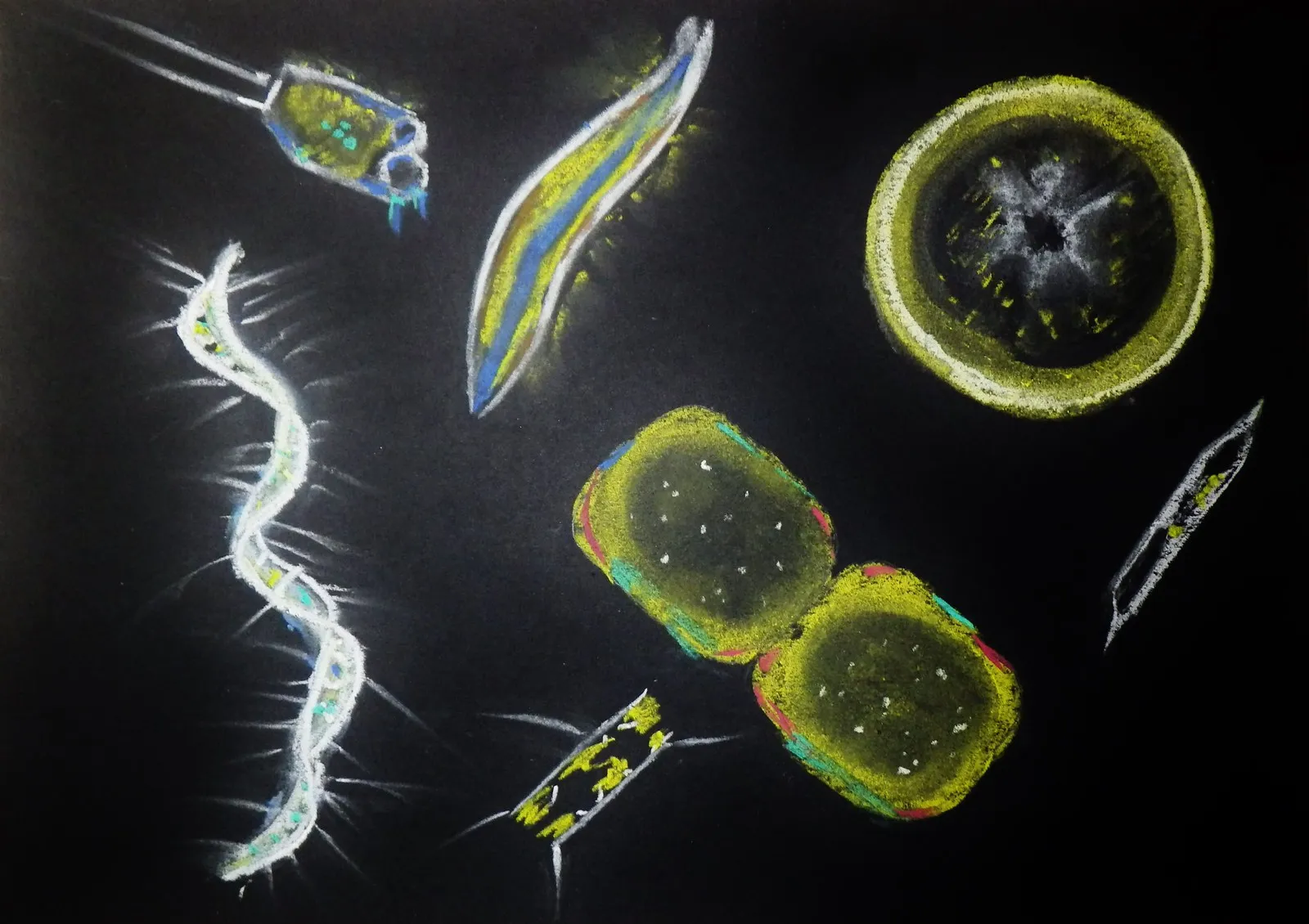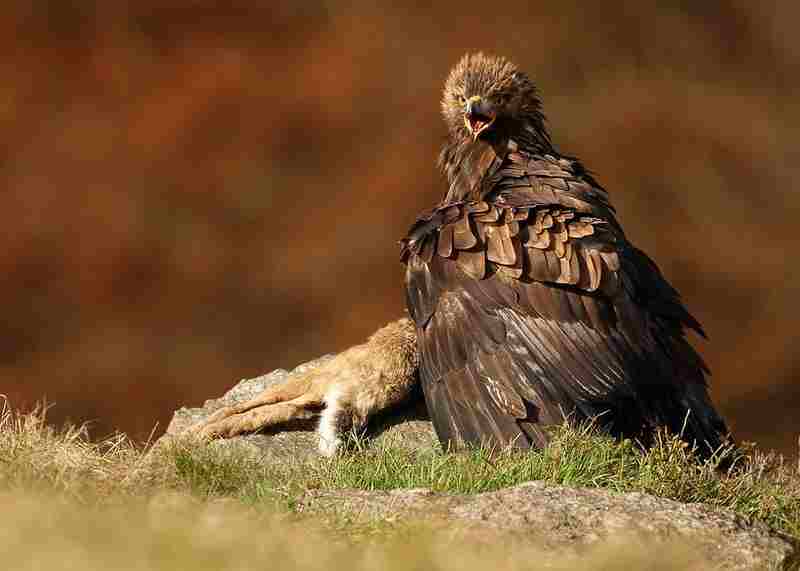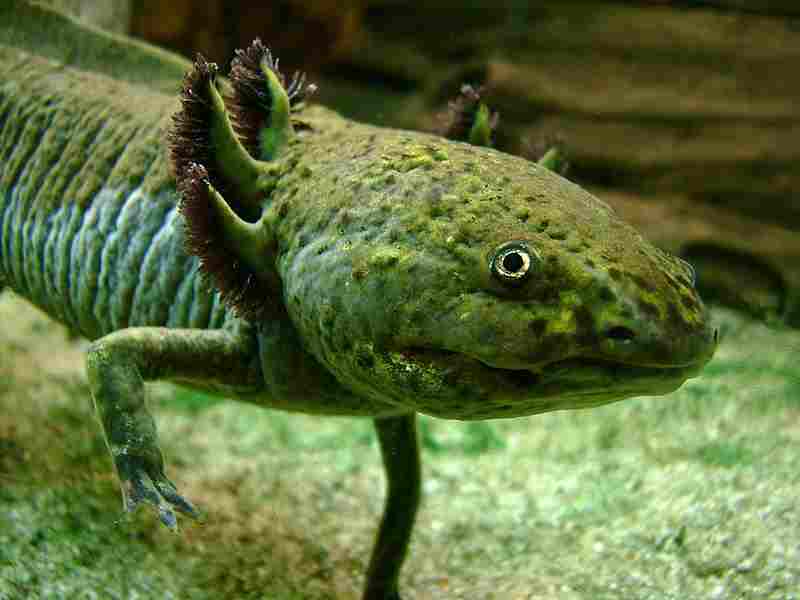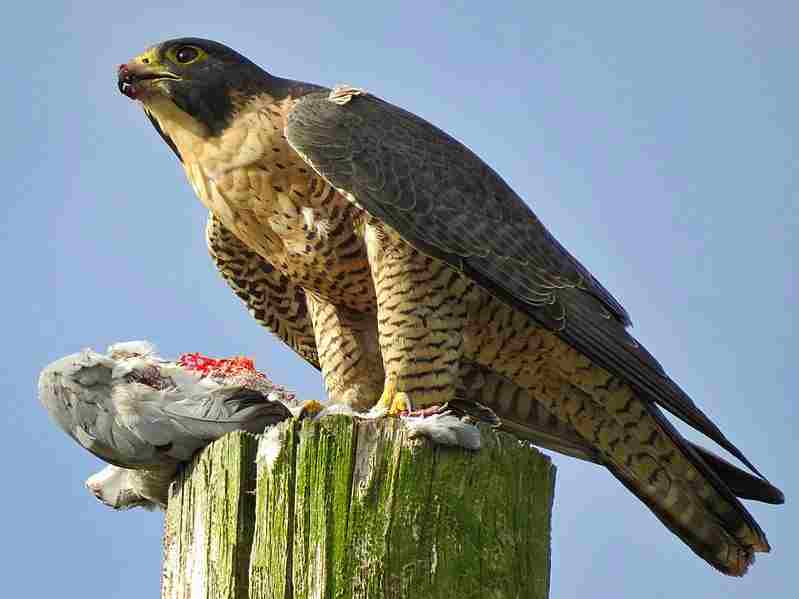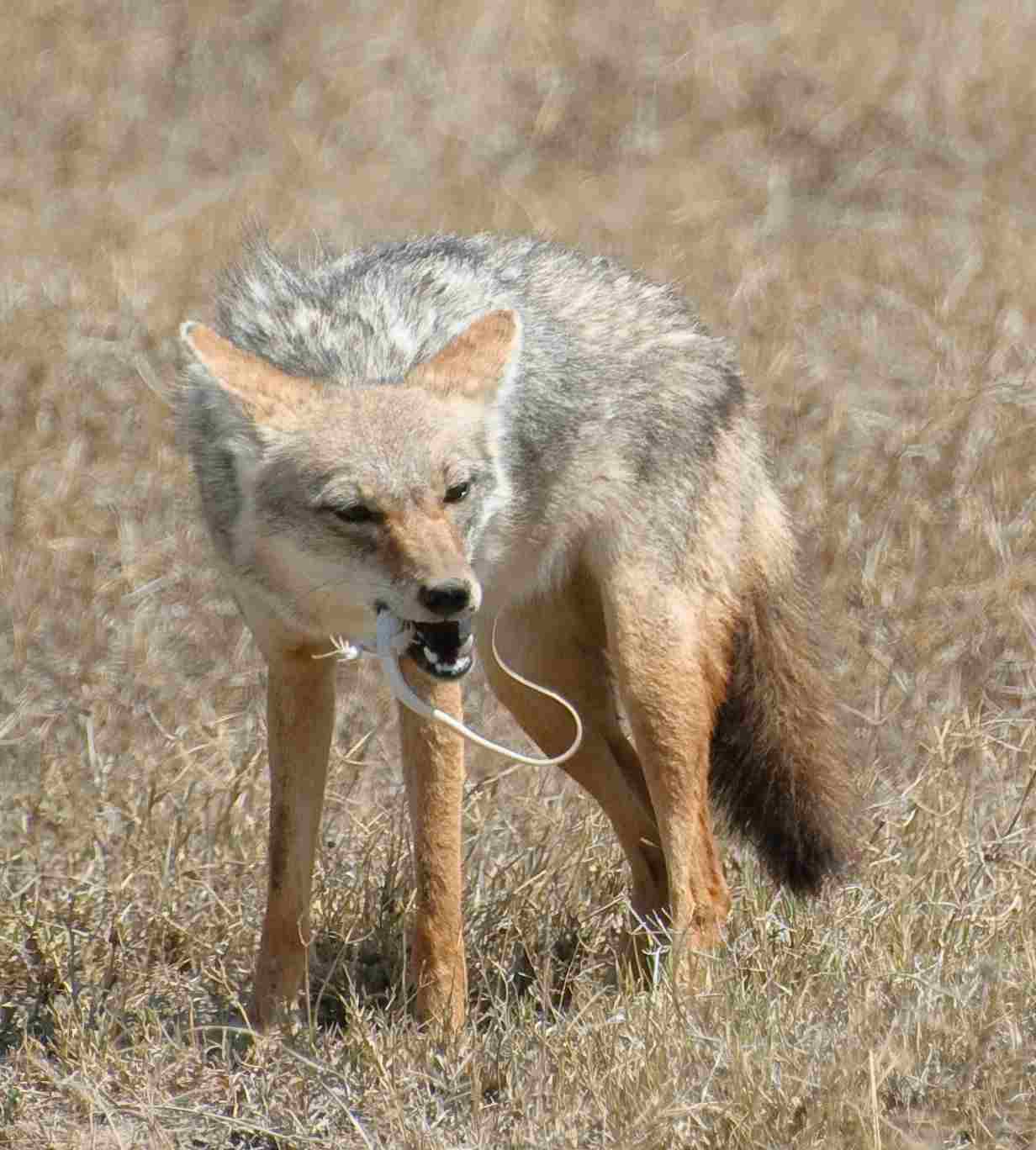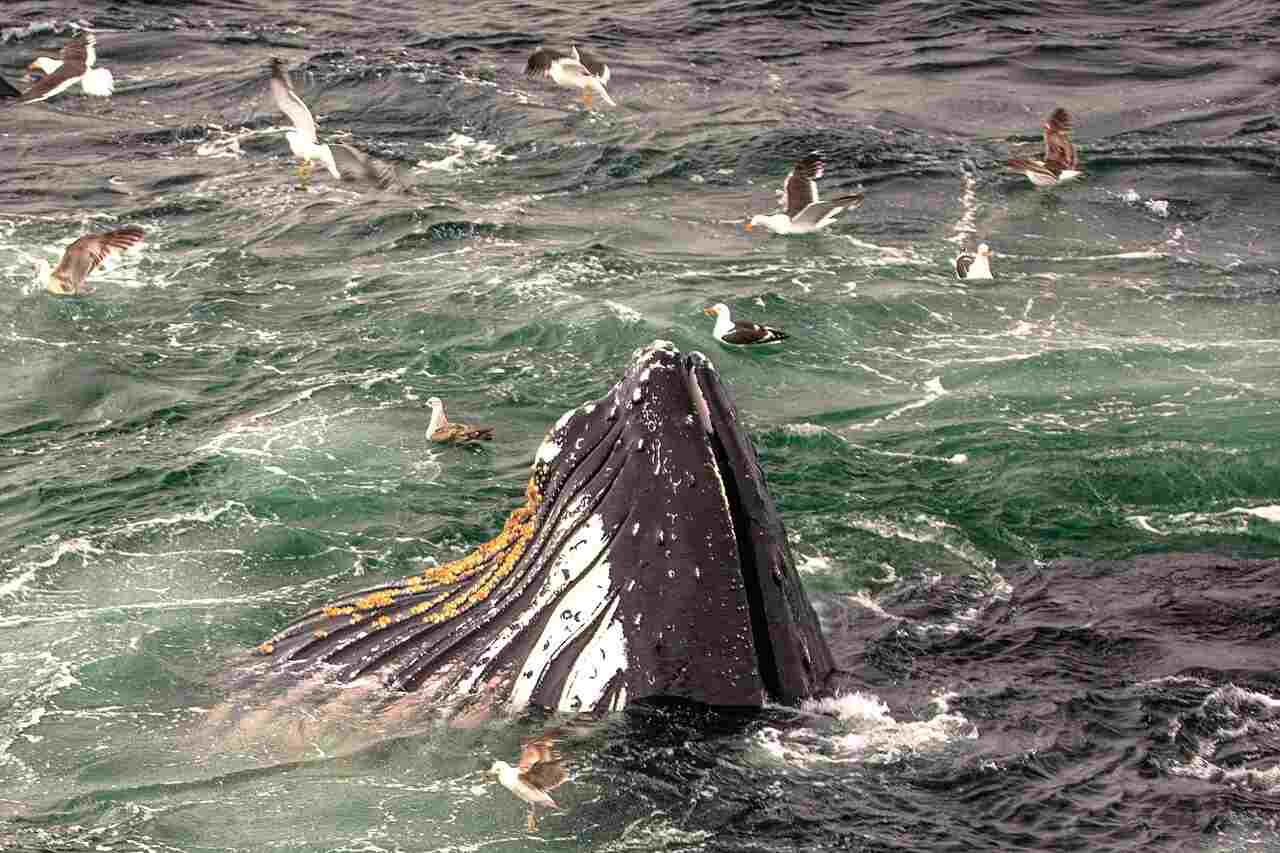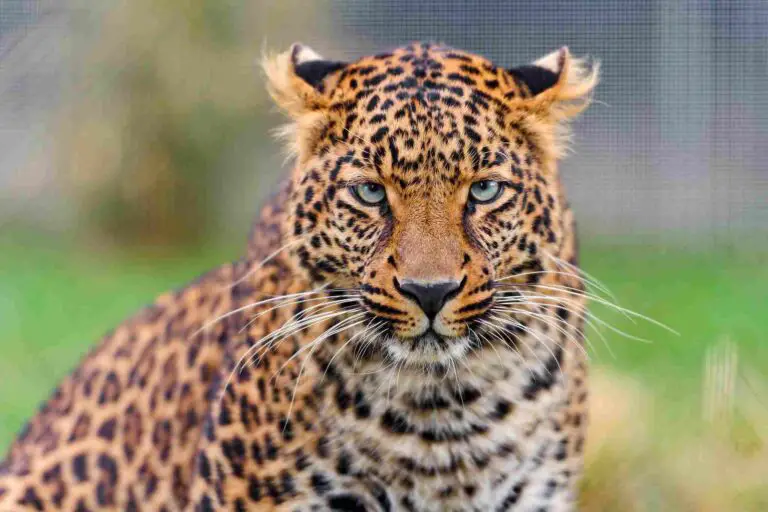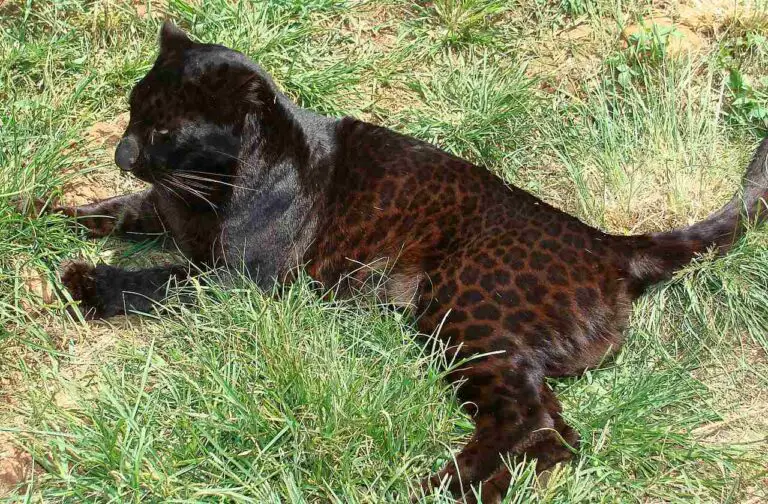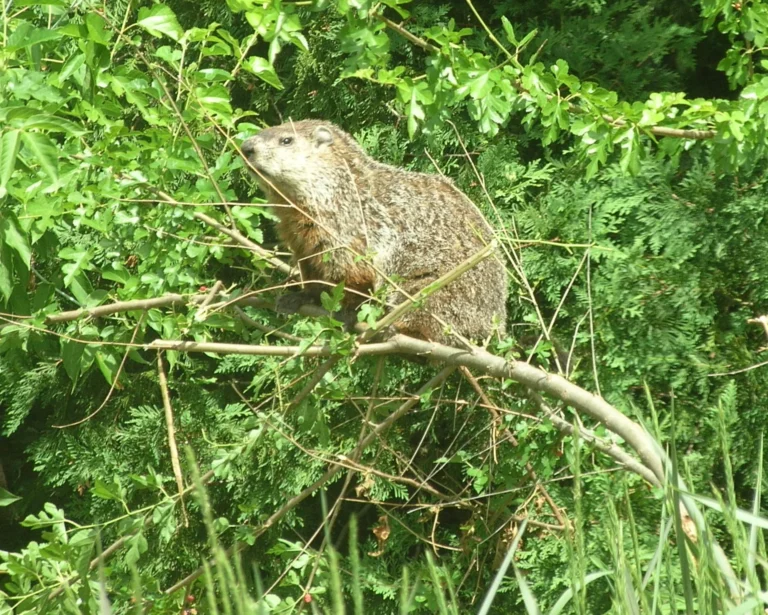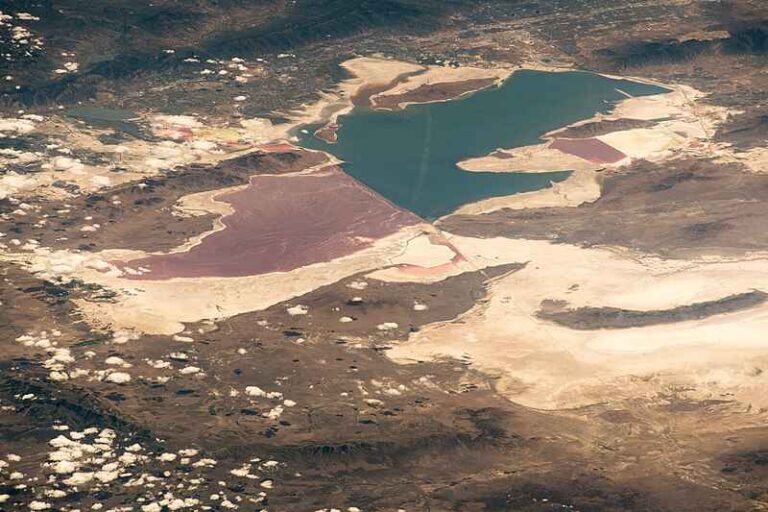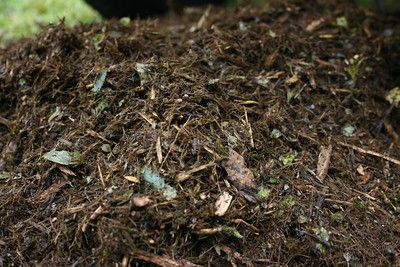Food Chain of the Atlantic Ocean | Food Web of the Atlantic Ocean
Food chain of the Atlantic Ocean is a linear hypothetical structure that comprises of producers like diatoms, primary consumers like krill, secondary consumers like corals, tertiary consumers like octopuses, and quaternary consumers like orcas.
Food web of the Atlantic Ocean is a complex network of interdependent organisms connected to each other at various levels through feeding relationships.
This article discusses the food chain and food web of the Atlantic Ocean respectively, as follows;
Food Chain of the Atlantic Ocean
Food Web of the Atlantic Ocean
-Food Chain of the Atlantic Ocean
1). Producers in the Atlantic Ocean: Biotic Components of the Atlantic Food Chain
Producers play a crucial role in the intricate web of life within the Atlantic Ocean, contributing to the ecosystem's overall biodiversity by supporting various marine organisms.
Some notable examples of producers in the Atlantic are; diatoms, cyanobacteria, dinoflagellates, kelp, red macroalgae, and green macroalgae. Each of them is discussed below;
1. Diatoms
Diatoms are microscopic algae that are abundant in the Atlantic Ocean. These single-celled organisms possess a unique glass-like cell wall made of silica. Diatoms are vital contributors to the energy transfer dynamics of the oceanic food web as they serve as a primary food source for various marine organisms, which range from microscopic zooplankton to larger filter-feeding animals.
2. Cyanobacteria
Cyanobacteria, often referred to as blue-green algae, are photosynthetic bacteria that are present in the Atlantic Ocean. These microorganisms are capable of converting solar radiation into bioenergy through photosynthesis.
Cyanobacteria contribute to the ocean's nitrogen cycle and also have a crucial role to play in primary production, providing sustenance for numerous marine species.
3. Dinoflagellates
Dinoflagellates are another group of unicellular organisms found in the Atlantic.
These organisms are known for their diverse forms and can be both autotrophic (photosynthetic) and heterotrophic (feeding on other organic matter).
Some species of dinoflagellates are bioluminescent, creating the phenomenon commonly known as "red tide."
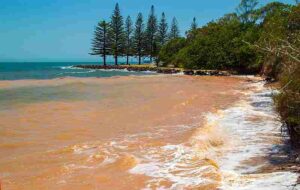
4. Kelp
Kelp, a type of large brown algae, forms extensive underwater forests (called 'kelp forests') in certain areas of the Atlantic Ocean. These marine plants provide habitat and refuge for a wide range of marine life. Kelp is also a primary producer, utilizing sunlight to perform photosynthesis and contributing significantly to the overall productivity of the Atlantic ecosystem.
5. Red Macroalgae
Red macroalgae, belonging to the phylum Rhodophyta, are conspicuous in the Atlantic Ocean. These algae are adapted to different depths and can range from small, encrusting forms to larger, branching structures.
Red macroalgae contribute to the species richness of marine ecosystems, by providing habitats for various organisms and supporting coastal ecosystems.
6. Green Macroalgae
Green macroalgae, also known as green seaweeds, thrive in the Atlantic Ocean. These algae are photosynthetic and contribute to the oxygen cycle of the ocean. Like other macroalgae, they have an effective role to play in providing food and shelter for marine life, contributing to the overall vitality and equilibrium of the Atlantic ecosystem.
Generally, the producers in the Atlantic Ocean, including diatoms, cyanobacteria, dinoflagellates, kelp, red macroalgae, and green macroalgae, form the foundation of the marine food web.
Their ability to harness light from the sun through photosynthesis sustains life in the ocean, supporting a diverse array of marine organisms and contributing to the ecological balance of this vast and dynamic environment.
2). Primary Consumers in the Atlantic Ocean
Primary consumers in the Atlantic Ocean are a diverse group of organisms that have a crucial role to play in transferring energy through the marine food web.
They feed on producers, such as macroalgae and phytoplankton, and serve as a link between the organisms in lower trophic levels and higher trophic levels of the oceanic energy pyramid.
Among the primary consumers in the Atlantic, some notable examples include krill, pteropods, manatees, and parrotfish. These organisms are individually discussed below;
1. Krill
Krill are small, shrimp-like crustaceans that inhabit the Atlantic Ocean. These tiny organisms are a vital food source for various marine animals, including fish, whales, seals, and seabirds. Krill feed on phytoplankton and zooplankton, acting as a crucial link between the primary producers and higher trophic levels in the oceanic food web.
2. Pteropods
Pteropods, also known as sea butterflies, are small, planktonic mollusks that can be found in the Atlantic.
These organisms have a significant role to play as primary consumers, grazing on phytoplankton and contributing to nutrient cycling in the ocean. Pteropods are also an essential food source for various marine species, including larger mollusks, fish, and some seabirds.
3. Manatees
Manatees, also refereed to as sea cows, are large herbivorous marine mammals that inhabit coastal waters and estuarine habitats in the Atlantic Ocean. These large herbivores mainly feed on seagrasses and other aquatic macrophytes. Manatees are vital primary consumers, influencing the performance and distribution of seagrass ecosystems while also (occasionally) serving as prey for predators like sharks and crocodiles.
4. Parrotfish
Parrotfish are colorful, herbivorous fish commonly found in coral reef ecosystems within the Atlantic Ocean. These fish are crucial in their role as primary consumers, as they feed on algae that grow on coral reefs. The grazing activities of parrotfish help control algal growth, promoting the continuous growth and resilience of coral reefs. In addition, their feeding habits contribute to the recycling of nutrients within the ecosystem.
These primary consumers are individually and collectively integral to the sustainability of the Atlantic Ocean ecosystem, connecting the energy derived from photosynthesis by producers to heterotrophic organisms in higher trophic levels. Their feeding habits and ecological roles both contribute to the overall productivity and stability of the marine environment.
Assessing the dynamics of these primary consumers is essential for the effective conservation and management of the diverse habitats occurring within the Atlantic Ocean.
3). Secondary Consumers in the Atlantic Ocean: Biotic Components of the Atlantic Food Chain
Secondary consumers in the Atlantic Ocean are organisms that feed mainly on primary consumers, playing an important role in energy transfer within the oceanic food chain.
These consumers typically occupy the third trophic level, and contribute to the intricate balance of the ocean ecosystem. Notable examples of secondary consumers in the Atlantic include cod, corals, sardines, and the Atlantic horseshoe crab. Below is a concise discussion of their attributes and ecological functions;
1. Cod
Cod, such as the Atlantic cod, are predatory fish found in marine habitats like the Atlantic Ocean.
They are important secondary consumers, which prey on other fish like herring, parrotfish and sardines, as well as crustaceans like krill, shrimps and crabs. This implies that the cod's diet is diverse and encompasses some of its fellow secondary consumers.
Cod are commercially significant and have historically been a target for fisheries, impacting the dynamics of the ecosystem due to their position in the food chain.
2. Corals
While corals are primarily known as sessile marine animals, they also function as secondary consumers.
Certain coral species engage in a mutualistic relationship with zooxanthellae, which is a type of photosynthetic algae. The corals benefit from the photosynthetic products of the algae, and at the same time, they capture and consume zooplankton and other small, biogenic food sources, acting as secondary consumers in the process.
3. Sardines
Sardines are small-sized, schooling fish that may serve as both primary and secondary consumers in the Atlantic Ocean.
As primary consumers, they feed on phytoplankton, but they also (and more prominently) occupy a secondary consumer role when preying on smaller zooplankton and other small fish. Sardines are an essential part of the diet for larger fish, marine mammals, and seabirds.
4. Atlantic Horseshoe Crab
The Atlantic horseshoe crab is a marine arthropod that is typically found along the Atlantic coast. While they can be detritivores, feeding on decaying organic matter, they also play a secondary consumer role, as they are highly adaptable and may feed on worms, herbivorous mollusks, and other crustaceans.
Horseshoe crabs serve as prey for various shorebirds and fish, thereby contributing to the energy flow within coastal ecosystems.
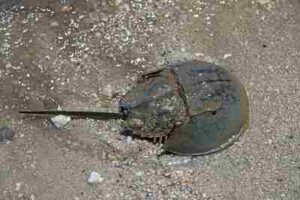
It is vital to understand the interactions between primary and secondary consumers for an effective analysis of the trophic dynamics of the Atlantic Ocean ecosystem.
These secondary consumers are critical in their role, in regulating the populations of primary consumers and influencing the overall productivity and continuity of marine ecosystems. Conservation efforts must therefore consider the intricate relationships between these organisms to maintain the balance of the Atlantic Ocean's biodiversity.
4). Tertiary Consumers in the Atlantic Ocean
Tertiary consumers in the Atlantic Ocean often represent the uppermost level of the marine food web (that is; in the absence of quaternary consumers), preying on secondary consumers and playing an effective role in regulating the populations of organisms in lower trophic levels.
These consumers are often advanced predators and contribute significantly to the balance of the ocean ecosystem.
Notable examples of tertiary consumers in the Atlantic include tuna, grey seal, leopard shark, North Atlantic octopus, squid, swordfish, and the Atlantic torpedo ray. Each organism is briefly discussed as follows;
1. Tuna
Tuna, such as the Atlantic bluefin tuna, are powerful and fast-swimming fish which occupy a high trophic level in the Atlantic Ocean. They are formidable tertiary consumers, preying on smaller fish like sardines and mackerel. Tuna are also highly sought after by commercial fisheries, while impacting the dynamics of the marine food web due to their role as high-level predators.
2. Grey Seal
Grey seals are marine mammals that inhabit the Atlantic Ocean, particularly in colder northern regions.
As tertiary consumers, they feed on a variety of fish species, including cod and herring. Grey seals are significant predators in the ecosystem and can exert cascading effects on organic populations in lower trophic levels.
3. Leopard Shark
The leopard shark is a coastal shark species found in the Atlantic Ocean. While not as large as some other shark species, they are tertiary consumers, and feed on a variety of bony fish, crustaceans, and mollusks.
Leopard sharks have an effective role to play in regulating the populations of their prey species, thereby contributing to the overall dynamics of the aquatic ecosystem.
4. North Atlantic Octopus
Octopuses are intelligent and adaptable marine predators found in the Atlantic Ocean. Some species, like the North Atlantic octopus, are tertiary consumers, which feed on various crustaceans, fish, as well as other cephalopods.
Like other predatory consumers, octopuses are essential in maintaining the diversity and abundance of their prey species.
5. Squid
Squid, including species like the Atlantic squid, are cephalopods that serve as tertiary consumers in the Atlantic Ocean.
They are agile and voracious predators, which prey on smaller fish and crustaceans. Squid are an important food source for larger marine predators, including whales, sharks, and seabirds.
6. Swordfish
Swordfish are large predatory fish found in the Atlantic Ocean and are considered tertiary consumers.
They feed on a variety of fish, which include smaller tuna and mackerel, as well as on mollusks like squid. Swordfish are powerful swimmers and are themselves targeted by commercial fisheries.
7. Atlantic Torpedo Ray
The Atlantic torpedo ray is a type of electric ray found in the Atlantic Ocean. As a tertiary consumer, it preys on various fish and invertebrates using its electric shock capabilities.
The presence of torpedo rays helps regulate the populations of their prey and contributes to the overall biodiversity of the ocean.
Generally, tertiary consumers occupy a critical position in the Atlantic Ocean's food chain, influencing the abundance and distribution of lower trophic levels.
Like other biotic factors in the ocean, understanding the ecological roles of these apex predators is required for effective marine conservation and management strategies. Conservation efforts must consider the intricate relationships between these species to maintain the vitality and stability of the Atlantic Ocean's ecosystem.
5). Quaternary Consumers in the Atlantic Ocean: Biotic Components of the Atlantic Food Chain
Quaternary consumers in the Atlantic Ocean represent the highest trophic level in the marine food chain, preying on primary, secondary and tertiary consumers; and playing a pivotal role in regulating the overall balance of the ecosystem.
These consumers are often apex predators, which exert top-down control on the populations of lower trophic levels.
Some examples of quaternary consumers in the Atlantic are; baleen whales, the Great White Shark, and orcas (killer whales). Below is a brief discussion of each example;
1. Baleen Whales
Baleen whales, such as the humpback whale or the blue whale, are massive marine mammals that occupy the highest trophic levels in the Atlantic Ocean. These whales are filter feeders, primarily consuming krill and small fish.
Their enormous size and feeding behaviors make them quaternary consumers, exerting top-down control on the populations of planktonic organisms and small fish species.
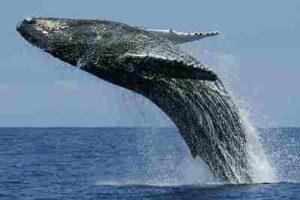
2. Great White Shark
The Great White Shark is a well-known apex predator in the Atlantic Ocean, representing a quaternary consumer. In food chains without a fifth trophic level, they may be classified as tertiary consumers in level 4 (which still makes them apex predators).
As a powerful and efficient predator, the Great White Shark feeds on a variety of marine animals, such as seals, sea lions, and various fish including smaller sharks. Their presence influences the spatial distribution and adaptation(s) of prey species, and influences the overall biotic conditions of the marine ecosystem.
3. Orca (Killer Whale)
Orcas, or killer whales, are highly intelligent and social marine mammals that are considered apex predators in the Atlantic Ocean.
Orcas are quaternary consumers which feed on a diverse range of prey, including fish, seals, dolphins, and even other (vulnerable) whales. Their hunting strategies and adaptability make them influential in defining the dynamics of the marine food web.
As quaternary consumers, these apex predators have a vital function in maintaining the dynamics and stability of the Atlantic Ocean ecosystem.
Their feeding behaviors and natural interactions with organisms in lower trophic levels have cascading effects, which influence the abundance and distribution of various species throughout the marine environment.
Conservation measures for quaternary consumers are also essential to preserving the biodiversity and ecological equilibrium of the Atlantic Ocean. This means that the complex relationships occurring within the marine food web are crucial considerations for effective management and sustainable conservation practices.
6). Decomposers and Detritivores in the Atlantic Ocean
Decomposers and detritivores in the Atlantic Ocean are important components of the marine ecosystem, which are responsible for breaking down organic materials as well as recycling nutrients.
These organisms effectively contribute to the health of the ocean, by cleaning up detrital biogenic wastes, and facilitating the process of nutrient cycling.
Among the decomposers and detritivores in the Atlantic, several notable examples include bacteria, fungi, Christmas tree worms, sea stars, sea cucumbers, sea slugs, banded shrimp, and sea urchins. Below are more details;
1. Bacteria
Bacteria are microscopic decomposers found throughout the Atlantic Ocean. They play a fundamental role in the breakdown of organic matter, such as the remains of dead plants and animals, into simpler products. Bacteria are vital for nutrient recycling, which they facilitate y by converting organic material into forms that can be assimilated and used by other organisms in the marine food web.
2. Fungi
Marine fungi, like their terrestrial counterparts, contribute to the biodegradation of organic matter in the Atlantic Ocean. They are particularly instrumental and important in breaking down complex compounds and facilitating the recycling of nutrients within marine ecosystems.
3. Christmas Tree Worm
Christmas tree worms are small marine invertebrates that usually inhabit coral reefs in the Atlantic. While primarily filter feeders, they are also known to contribute to detritus processing.
The waste and debris generated by Christmas tree worms often become a source of organic substrate for decomposers, and other detritivores in their habitat.
4. Sea Star
Sea stars, also called starfish, are detritivores that make a vital contribution toward controlling the population of other marine organisms.
They include opportunistic feeders that can scavenge, using their tube feet to capture and ingest organic matter, including animal and plant remains. Sea stars are essential for maintaining the equilibrium of resources in the ecosystem by preventing the accumulation of organic waste like detritus.
5. Sea Cucumber
Sea cucumbers are detritivores that actively feed on detritus and other organic particulates on the ocean floor. As benthic animals, they play a significant role in localized nutrient cycling by breaking down and processing organic materials.
Some sea cucumber species contribute to the vitality of coral reefs by recycling nutrients in these ecosystems.
6. Sea Slug
Certain species of sea slugs are detritivores, feeding on decaying plant and animal remains. They help in the decomposition process by breaking down detrital fragments into even smaller and simpler materials. Sea slugs contribute to nutrient cycling in marine environments.
7. Banded Shrimp
Banded shrimp are detritivores that actively scavenge and consume organic matter on the ocean floor.
They play an effective role in breaking down detritus, thereby assisting in the decomposition process. Banded shrimp are important contributors to nutrient cycling in coastal-reef and intertidal zones.
8. Sea Urchin
Sea urchins are also detritivores that graze on algal matter and other organic substrates on the seabed. Their feeding activities contribute to the breakdown of detritus, and they simultaneously play a role in the control of algae populations. Sea urchins are therefore integral to maintaining the stability of marine ecosystems.
Generally, these decomposers and detritivores are essential for the recycling of organic matter in the Atlantic Ocean. By breaking down detritus into simpler forms, they release nutrients back into the resource pool of the ocean, supporting the growth of primary producers and contributing to both the instantaneous and long-term survival of the marine ecosystem.
-Food Web of the Atlantic Ocean
The food web of the Atlantic Ocean is a complex ecological structure that comprises of interconnections between marine organisms in various levels, on the basis of feeding, energy transfer, and organic survival.
While it is different and more realistic than the food chain, the food web of the Atlantic Ocean can easily be analyzed and discussed by dissembling and simplifying it into multiple, linear food chains which link both inward and outward to form the food web. Some of such food chains are discussed here.
1). Food Chain 1: An Idealized Component of the Food Chain of the Atlantic Ocean
Diatoms, brown algae, green macroalage (Trophic Level 1)→krill, jellyfish, pteropods (Trophic Level 2)→cod, sardines, corals (Trophic Level 3)→octopus, swordfish, squid, grey seal (Trophic Level 4)→orca, Great White shark (Trophic Level 5)
*Trophic Level 1: Producers
Producers in Chain 1 of the Atlantic Ocean food web are; diatoms, brown algae, and green macroalgae. Below is a concise outline of their basic attributes and functions;
Diatoms are microscopic algae that perform photosynthesis, converting sunlight into energy.
Brown algae are large, multicellular algae that contribute to primary production in the Atlantic.
Green macroalgae are photosynthetic macroscopic algae, adding to the overall productivity.
*Trophic Level 2: Primary Consumers
Primary consumers in the Atlantic Ocean food web from Chain 1 include; krill, jellyfish, and pteropods.
Krill are small crustaceans that feed on diatoms and other planktonic organisms.
Jellyfish are gelatinous zooplankton that consume small organisms like plankton.
Pteropods can be described as small, planktonic mollusks that graze on phytoplankton.
*Trophic Level 3: Secondary Consumers
Secondary consumers in Chain 1 include cod, sardines and corals.
Cod are predatory fish that feed on smaller fish like sardines and krill.
Sardines are small, schooling fish that consume plankton and small organisms.
Corals are colonial marine organisms that capture prey using stinging tentacles.
*Trophic Level 4: Tertiary Consumers
Octopus, swordfish, squid and grey seal are tertiary consumers in Chain 1 of the Atlantic Ocean food web.
Octopus are intelligent cephalopods that prey on fish and other marine invertebrates.
Swordfish are advanced predators that feed on a variety of fish and cephalopods.
Squids are cephalopods that are preyed upon by swordfish and other predators.
Grey seals are marine mammals that primarily feed on fish, crustaceans and small cephalopods.
*Trophic Level 5: Apex Predators
Apex predators in Food Chain 1 are; orca and great white shark.
Orcas or killer whales are apex marine predators that feed on a variety of marine mammals and fish.
Great white sharks are also predators known for their consumption of marine mammals and other fish.
Interconnections and Linkages of Chain 1
The interconnectivity of organic processes in Chain 1 are discussed here using diatoms, sardines, squid and corals as examples.
Diatoms, as primary producers, are crucial at the base of the food chain. They are consumed by krill, which then becomes prey for higher trophic levels. Diatoms also play a role in supporting various other trophic levels indirectly through the consumption of their derivatives.
Sardines can function both as primary and secondary consumers. They consume diatoms and plankton as primary consumers and are preyed upon by cod, which are classified also as secondary consumers.
This multiplicity of function creates linkages between different trophic levels, showcasing the interdependence of different species.
Squid exhibit a similar form of role multiplicity. While large squid are tertiary consumers, smaller individuals may serve as prey for swordfish and other tertiary predators, in addition to the quaternary consumers like great white sharks. This illustrates the interconnectedness of the food web, where a single species can support multiple trophic levels.
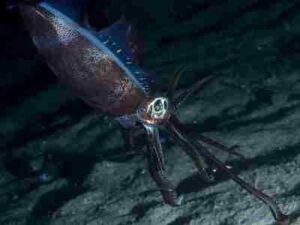
Corals, typically thought of as stationary organisms, are included as consumers in this food chain. They consume plankton, adding a unique dynamic to the trophic interactions within coral reef ecosystems.
The activities of certain organisms, such as diatoms, sardines, squid, and corals, in different trophic levels creates linkages that contribute to building a complex and interconnected Atlantic food web. This interdependence is crucial for the stability and resilience of the marine ecosystem, as disruptions in one trophic level can have cascading effects on others. The diversity and adaptability of species contribute to the overall vitality and balance of the Atlantic Ocean's intricate food web.
Recurring Organisms
The Atlantic Ocean food web structure is a complex mosaic that relies on both internal and external linkages of food 'chains'. Below is a list of organisms in Chain 1 that also occur in the other food chains, to which they are linked;
Diatoms (also occur in Chains 2 and 4)
Brown algae (also occur in Chain 3)
Green macroalgae (also occur in Chain 3)
Krill (also occur in Chains 2 and 4)
Jellyfish (also occur in Chains 3 and 4)
Pteropods (also occur in Chain 3)
Cod (also occurs in Chain 4)
Sardines (also occur in Chains 2 and 3)
Corals (also occur in Chains 2, 3, and 4)
Octopus (also occurs in Chain 4)
Swordfish (also occur in Chain 3)
Squid (also occur in Chain 3)
Grey seal (also occurs in Chain 2)
Orca (also occurs in Chains 2 and 4)
Great white shark (also occurs in Chain 3)
2). Food Chain 2
Brown algae, cyanobacteria, seagrass, diatoms (Trophic Level 1)→manatee, limpets, krill, parrotfish (Trophic Level 2)→corals, sardines, horseshoe crab (Trophic Level 3)→grey seal, leopard shark, ray (Trophic Level 4)→baleen whale; orca (Trophic Level 5)
*Trophic Level 1: Producers
In Chain 2 of the Atlantic Ocean food web, producers include brown algae, cyanobacteria, seagrass, and diatoms.
Brown algae are large, multicellular algae that contribute to primary production.
Cyanobacteria are photosynthetic bacteria that harness sunlight for energy.
Seagrass are flowering plants adapted to live submerged in marine environments.
Diatoms are microscopic algae that play a vital role in marine photosynthesis.
*Trophic Level 2: Primary Consumers
The primary consumers in Chain 2 are; manatees, limpets, krill, and parrotfish.
Manatees are herbivorous marine mammals that graze on seagrass and other vegetation.
Limpets are grazing marine snails that feed on algae and microscopic organisms.
Krill are small crustaceans that feed on phytoplankton and algae.
Parrotfish are herbivorous fish that graze on algae and contribute to coral sand production.
*Trophic Level 3: Secondary Consumers
In Chain 2 of the food web of the Atlantic Ocean, secondary consumers are; corals, sardines, and horseshoe crabs.
Corals are colonial marine organisms that capture prey using stinging tentacles.
Sardines are small-sized schooling fish that consume plankton and small organisms.
Horseshoe crab are opportunistic crustaceans that feed on organic matter on the ocean floor.
*Trophic Level 4: Tertiary Consumers
The tertiary consumers in this Atlantic food chain are; grey seal, leopard shark, and ray.
Grey seals are marine mammals that primarily feed on fish and cephalopods.
Leopard sharks are predatory fish that consume a variety of fish and invertebrates.
Ray (Atlantic Torpedo Ray) is known to feed on small fish and invertebrates.
*Trophic Level 5: Apex Predators
The apex predators/quaternary consumers in Chain 2 are; baleen whales, and orca (killer whale).
Baleen whales are large filter-feeding whales that consume plankton and small fish.
Orcas are apex predators that feed on a variety of marine mammals and fish.
Interconnections and Linkages
Diatoms appear in both Food Chain 1 and Food Chain 2. They function as primary producers and are crucial for supporting various trophic levels, forming a linkage between the two food chains. The consumption of diatoms by krill in Food Chain 1 as well as by limpets and krill in Food Chain 2 highlights the interconnectedness of these chains and the complexity of the marine ecosystem.
Corals appear in multiple food chains also, playing different roles. In Food Chain 1, corals are secondary consumers, capturing prey using stinging tentacles. In Food Chain 2, they appear alongside sardines and horseshoe crabs as secondary consumers, relying on their symbiotic relationship with zooxanthellae as well as on other food sources, for energy. The presence of corals in both chains creates a connection between shallow reef ecosystems and deeper marine environments.
Sardines are present in food chains 1, 2, and 3, where they serve as secondary consumers. This recurrence emphasizes their importance as a link between different trophic levels and ecosystems.
The recurrence of organisms like diatoms, corals, and sardines in the food chains represented in this article, creates linkages that build the Atlantic food web. These organisms connect different trophic levels and ecosystems, illustrating the complexity and interdependence of marine life in the Atlantic Ocean. The ability of these species to occupy multiple roles and adapt to various environments contributes to the resilience and sustainability of the broader marine ecosystem.
Below is a full list of recurring organisms in Chain 2 that link to other chains and trophic levels, to build the food web of the Atlantic Ocean;
Diatoms (also occur in Chains 1 and 4)
Cyanobacteria (also occur in Chain 4)
Brown algae (also occur in Chains 1 and 3)
Krill (also occur in Chains 1 and 4)
Corals (also occur in Chains 1, 3, and 4)
Horseshoe crab (also occurs in Chain 4)
Grey seal (also occurs in Chain 1)
Leopard shark (also occurs in Chain 4)
Orca (also occurs in Chains 1 and 4)
3). Food Chain 3: An Idealized Component of the Food Chain of the Atlantic Ocean
Dinoflagellates, brown algae, green macroalgae (Trophic Level 1)→pteropods, jellyfish, parrotfish (Trophic Level 2)→sardines, sea sponges, corals (Trophic Level 3)→tuna, swordfish, squid (Trophic Level 4)→Great White shark (Trophic Level 5)
*Trophic Level 1: Producers
Producers in Chain 3 of the Atlantic Ocean food web are; dinoflagellates; brown algae and green macroalgae.
Dinoflagellates are microscopic, photosynthetic protists that contribute to primary production.
Brown algae are a group of large, multicellular algae that play a role in marine photosynthesis.
Green macroalgae are macroscopic algae that contribute to primary production.
*Trophic Level 2: Primary Consumers
The primary consumers here are; pteropods, jellyfish, and parrotfish.
Pteropods are small, planktonic mollusks that graze on phytoplankton and other small organisms.
Jellyfish are gelatinous zooplankton that consume small organisms like plankton.
Parrotfish are herbivorous fish that graze on algae and contribute to coral sand production.
*Trophic Level 3: Secondary Consumers
Sardines, sea sponges and corals constitute the secondary consumers occupying Food Chain 3.
Sardines are small, schooling fish that consume plankton and other organisms.
Sea sponges are filter-feeding organisms that extract nutrients from the water.
Corals are colonial marine organisms that capture prey using stinging tentacles.
*Trophic Level 4: Tertiary Consumers
The tertiary consumers are; tuna, swordfish, and squid.
Tuna are predatory fish that feed on smaller fish like sardines and squid.
Swordfish are advanced predators that feed on a variety of fish and cephalopods.
Squid are cephalopods that are predatory, with smaller individuals also serving as prey for larger predators.
*Trophic Level 5: Apex Predator
The great white shark is the quaternary consumer in this food chain.
Great white sharks are apex predators known for their consumption of marine mammals and other fish.
Interconnections and Linkages that Build the Atlantic Food Web Structure
Dinoflagellates appear in Food Chain 3 as primary producers. Their presence is crucial for providing energy to the entire food chain. Other phytoplankton like diatoms also appear in Food Chains 1, 2, and 4, contributing to the overall productivity of the Atlantic Ocean.
Brown algae, as primary producers, contribute to both Food Chain 2 and Food Chain 3 (They are also present in Chain 1). Their role in providing energy to the marine community through photosynthesis, links these two chains, showcasing the interconnectedness of the Atlantic ecosystem and the complexity of its food web.
Green macroalgae are present in both Food Chain 1 and Food Chain 3, emphasizing their importance in supporting different trophic levels. Their role in primary production creates linkages between various marine organisms.
Parrotfish are consumers at Trophic Level 2 in both Food Chain 2 and Food Chain 3. Their presence illustrates their ecological significance as consumers of algae and plankton, contributing to nutrient cycling and the health of coral reef ecosystems.
The recurrence of dinoflagellates, brown algae, green macroalgae, and parrotfish in multiple food chains creates linkages that build the Atlantic food web. These linkages demonstrate the flow of energy and nutrients between different trophic levels and ecosystems, highlighting the complexity and interdependence of marine life in the Atlantic Ocean. The adaptability and ecological roles of these organisms contribute to the resilience and sustainability of the broader marine ecosystem.
Below is a full list of recurring organisms that link out to create the complex structure of the Atlantic Ocean food web;
Brown algae (also occur in Chains 1 and 2)
Green macroalgae (also occur in Chain 1)
Pteropods (also occur in Chain 1)
Jellyfish (also occur in Chains 1 and 4)
Parrotfish (also occur in Chain 2)
Sardines (also occur in Chains 1 and 2)
Corals (also occur in Chains 1, 2, and 4)
Tuna (also occurs in Chain 4)
Swordfish (also occur in Chain 1)
Squid (also occur in Chain 1)
Great white shark (also occurs in Chain 1)
4). Food Chain 4
Red macroalgae, diatoms, cyanobacteria (Trophic Level 1)→krill, jellyfish (Trophic Level 2)→horseshoe crab, corals, cod (Trophic Level 3)→octopus, leopard shark, tuna (Trophic Level 4)→orca (Trophic Level 5)
*Trophic Level 1: Producers
Producers in Chain 4 of the food web of the Atlantic Ocean include; red macroalgae, diatoms, and cyanobacteria.
Red macroalgae are macroscopic algae that contribute to primary production.
Diatoms are microscopic algae that play a crucial role in marine photosynthesis.
Cyanobacteria are photosynthetic bacteria that contribute to the ocean's primary production.
*Trophic Level 2: Primary Consumers
Primary consumers in Chain 4 are; krill and jellyfish.
Krill are small crustaceans that graze on phytoplankton and other small organisms.
Jellyfish are gelatinous zooplankton that consume small organisms like plankton.
*Trophic Level 3: Secondary Consumers
Horseshoe crab, coral and cod represent the secondary consumers.
Horseshoe crabs are detritivores that feed on organic matter on the ocean floor.
Corals are colonial marine organisms that capture prey using stinging tentacles.
Cods are predatory fish that feed on smaller fish like krill and other crustaceans.
*Trophic Level 4: Tertiary Consumers
Organisms in level 4 of the food chain include; octopus, leopard shark, and tuna.
Octopus are adaptable and intelligent cephalopods that prey on fish and other marine invertebrates.
Leopard shark are predatory sharks that consume a variety of fish and invertebrates.
Tuna are predatory fish that feed on smaller fish like sardines and squid.
*Trophic Level 5: Apex Predator
Orcas are apex marine predators that feed on a variety of marine mammals and fish.
Interconnections and Linkages
The dynamics of feeding and trophic interconnectivity in Food Chain 4 can be discussed using diatoms, cyanobacteria, jellyfish, corals and tuna.
Diatoms appear also in Food Chain 1 as primary producers. Their role in providing energy to the food web is essential and highlights their interconnectedness with other marine organisms in the Atlantic.
Cyanobacteria, also present in Food Chain 2, contribute to primary production. Their role in harnessing sunlight for energy creates a link between trophic levels and ecosystems.
Jellyfish can also be found in both Food Chain 1 and Food Chain 3. Their role as primary consumers in both chains illustrates their importance in the marine food web and their link between producers and higher trophic levels.
Corals, present in Food Chain 4 as secondary consumers, also appear in Food Chains 1, 2, and 3. Their dual roles in different trophic levels create linkages between coral reef ecosystems and other marine environments.
Tuna, a tertiary consumer in Food Chain 4, also appears as a tertiary consumer in Food Chain 2. The recurrence of tuna highlights their importance as predators in different marine ecosystems.
The recurrence of diatoms, cyanobacteria, jellyfish, corals, and tuna in multiple food chains creates linkages that build the Atlantic food web. These linkages demonstrate the flow of energy and nutrients between different trophic levels and ecosystems, showcasing the complexity and interdependence of marine life in the Atlantic Ocean. The adaptability and ecological roles of these organisms contribute to the resilience and sustainability of the broader marine ecosystem.
Below is a full list of recurring organisms that link Food Chain 4 to other hypothetical chains to form the complex network known as the Atlantic Ocean food web;
Diatoms (also occur in Chains 1 and 2)
Cyanobacteria (also occur in Chain 2)
Krill (also occur in Chains 1 and 2)
Jellyfish (also occur in Chains 1 and 3)
Horseshoe crab (also occurs in Chain 2)
Corals (also occur in Chains 1, 2, and 3)
Cod (also occurs in Chain 1)
Octopus (also occurs in Chain 1)
Leopard shark (also occurs in Chain 2)
Tuna (also occurs in Chain 3)
Orca (also occurs in Chains 1 and 2)
Conclusion
Food chain of the Atlantic Ocean comprises of;
Producers
Primary Consumers
Secondary Consumers
Tertiary Consumers
Quaternary Consumers
Decomposers
The food web of the Atlantic Ocean is a complex network of trophic interactions between marine organisms in various levels, which can be simplified for discussion purposes into a series of interconnected food chains, such as those given below;
Food Chain 1: Diatoms, brown algae, green macroalgae (Trophic Level 1)→krill, jellyfish, pteropods (Trophic Level 2)→cod, sardines, corals (Trophic Level 3)→octopus, swordfish, squid, grey seal (Trophic Level 4)→orca, Great White shark (Trophic Level 5)
Food Chain 2: Brown algae, cyanobacteria, seagrass, diatoms (Trophic Level 1)→manatee, limpets, krill, parrotfish (Trophic Level 2)→corals, sardines, horseshoe crab (Trophic Level 3)→grey seal, leopard shark, ray (Trophic Level 4)→baleen whale; orca (Trophic Level 5)
Food Chain 3: Dinoflagellates, brown algae, green macroalgae (Trophic Level 1)→pteropods, jellyfish, parrotfish (Trophic Level 2)→sardines, sea sponges, corals (Trophic Level 3)→tuna, swordfish, squid (Trophic Level 4)→Great White shark (Trophic Level 5)
Food Chain 4: Red macroalgae, diatoms, cyanobacteria (Trophic Level 1)→krill, jellyfish (Trophic Level 2)→horseshoe crab, corals, cod (Trophic Level 3)→octopus, leopard shark, tuna (Trophic Level 4)→orca (Trophic Level 5)

